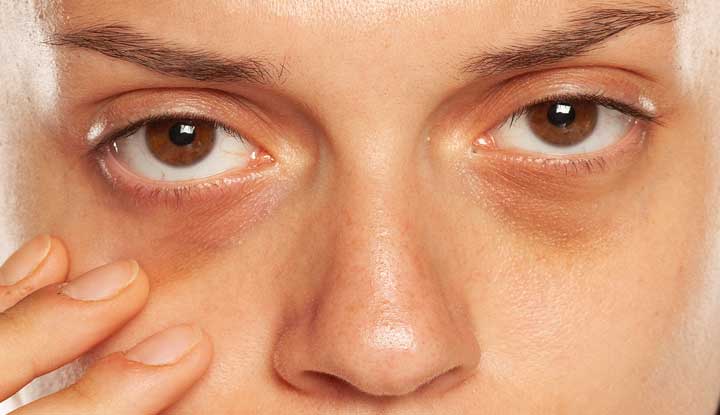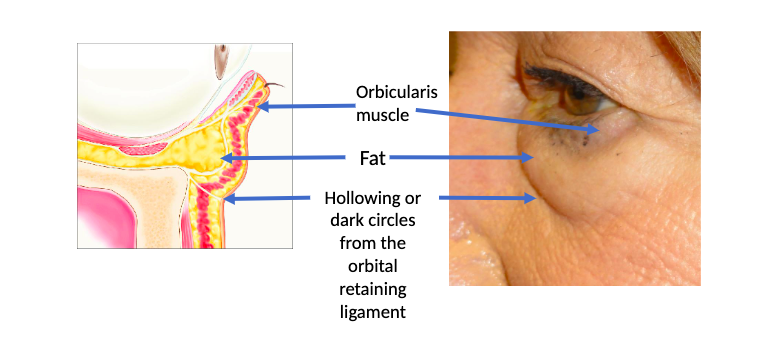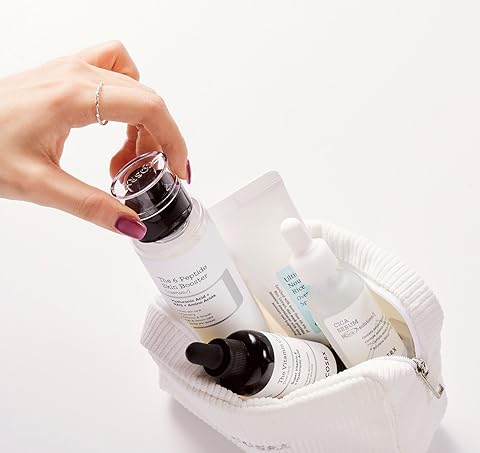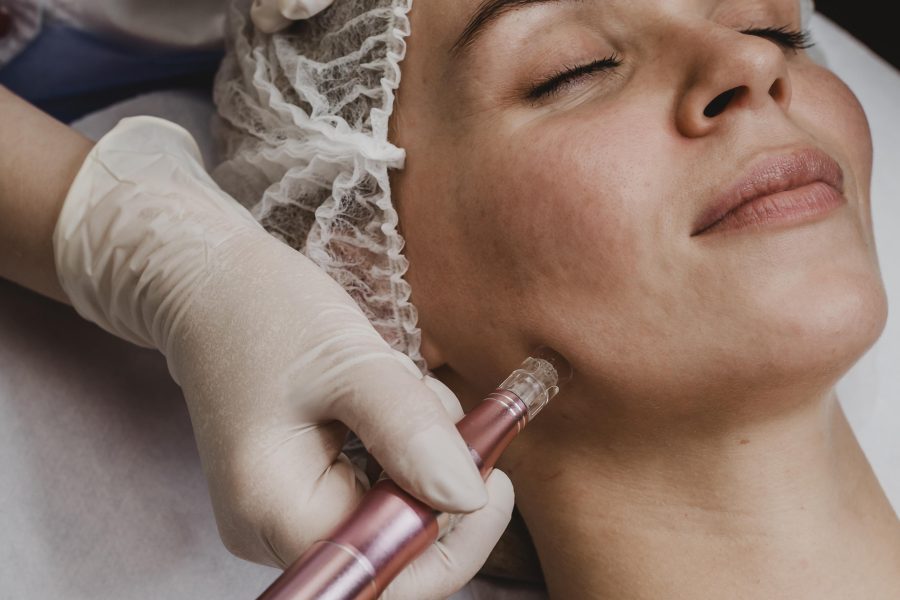Do you struggle with dark circles under your eyes? You’re not alone. Many people find these shadows frustrating, as they can make you appear tired and older than you really are. Even if you’re getting enough sleep and living a healthy lifestyle, those pesky dark circles can stick around, leaving you feeling defeated. What causes these stubborn marks? Are they simply a sign that you need more rest, or do deeper issues lurk beneath the surface?
Understanding the root causes of dark circles is essential for effective treatment. Factors such as genetics, lifestyle habits, and environmental influences all play a role, making it clear that there’s no one-size-fits-all solution. While these under-eye shadows can be challenging, the good news is that with the right knowledge and treatment options, you can manage and significantly reduce their appearance.
In this guide, we’ll explore the various causes of dark circles, from the physiological to the lifestyle-related. We’ll discuss scientifically-backed remedies, practical tips, and treatment options to help you achieve the bright, refreshed eyes you desire. Get ready to uncover the secrets to brighter eyes and reclaim your youthful glow!
- Uncover the Mystery Behind Dark Circles
- What Causes of Dark Circles?
- Dark Circles vs. Under-Eye Bags: Understanding the Difference
- Tailoring Skincare Treatments for Dark Circles
- When Skincare Creams Aren’t Enough: Seeking Professional Help
- Exploring advanced Treatments for Dark Circles
- Combination Treatments for Stubborn Dark Circles
- Can Dark Circles Be Cured?
- managing Dark Circles: A Holistic Approach
- Conclusion: Achieve Brighter, Refreshed Eyes
Uncover the Mystery Behind Dark Circles
To effectively tackle dark circles, you need a comprehensive approach that considers all possible causes. We’ll explore the science behind dark circles and highlight the factors that contribute to their formation. Additionally, we’ll discuss how cosmetic treatments like laser therapy, fillers, and chemical peels can improve your appearance.
You’ll also find practical skincare tips that can help prevent and reduce the appearance of dark circles, keeping your look bright and refreshed. Whether you’re dealing with pigmentation, puffiness, or both, this guide will equip you with the knowledge and tools to tackle dark circles and restore radiance to your eye area. Ready to brighten your eyes? Let’s dive in and take control of those dark circles!

What Causes of Dark Circles?
Dark circles can arise from various factors, including pigmentation issues and vascular concerns. When the skin under the eyes thins, it reveals the underlying blood vessels, leading to shadows. Understanding the different types of dark circles—pigmented, vascular, genetic, and non-genetic—will help you determine the appropriate treatment for each.
Types of Dark Circles Under the Eyes
Genetic vs. Non-Genetic Causes
Genetics plays a significant role in the appearance of dark circles. If you’ve noticed them from a young age, you may have inherited traits like thinner skin or excess pigmentation. Non-genetic causes include aging, lifestyle choices, and sun exposure, all of which can worsen the appearance of dark circles.
Pigmented vs. Vascular Dark Circles
- Hyperpigmentation: Dark circles that appear brown, yellow, or ocher usually stem from hyperpigmentation. This condition results from excess melanin production, often influenced by genetics, sun exposure, or hormonal changes. To treat hyperpigmented circles, brightening agents like Vitamin C or Niacinamide work effectively.
- Vascular Circles: Dark circles that are blue, purple, or teal arise from visible blood vessels under the skin. These vascular circles become more pronounced as skin thins with age or due to inadequate sleep. Topical treatments containing caffeine or vitamin K can help diminish their appearance, while ensuring adequate rest may also reduce visibility.
Irritation or Allergies
If you see red, rough, or scaly circles, you may be experiencing an allergic reaction or irritation. Consider allergy testing, antihistamines, or soothing creams prescribed by a dermatologist to alleviate symptoms and minimize the appearance of dark circles.
Dark Circles vs. Under-Eye Bags: Understanding the Difference
Dark circles and under-eye bags are often confused, but they stem from different causes and require distinct treatments. Under-eye bags typically arise from fluid retention or fat displacement, leading to a puffy, swollen appearance. In contrast, dark circles result from pigmentation issues or vascular problems. Recognizing these differences is essential, as the treatment approaches vary significantly.
What Are Under-Eye Bags?
Under-eye bags occur when fluid retention, fat displacement, or weakened skin creates a puffy, bulging appearance. Accumulated fluid can cause swelling that casts shadows, making underlying dark circles more noticeable. This combination of puffiness and shadowing can make you look tired and older than you are. Swollen tissue can also stretch the delicate skin under the eyes, making blood vessels more visible and further darkening the area.
Several factors can trigger this puffiness, including aging, certain medications, a high-salt diet, lack of sleep, and allergies. The thin skin beneath the eyes amplifies any shifts in fat or fluid, which can be misinterpreted as dark circles.
Causes of Under-Eye Bags
Skin Thinning and Loss of Elasticity: Aging causes the skin around the eyes to thin and lose elasticity. This makes blood vessels more visible and contributes to both puffiness and dark circles, as thinner skin and decreased collagen levels highlight existing discoloration.
Fluid Retention: High salt intake, hormonal changes, or inadequate sleep can lead to fluid retention, causing puffiness in the lower eyelids. This swelling can create shadows, making dark circles appear more prominent.
Fat Displacement: As we age, the fat pads that support the under-eye area can shift or diminish. These changes create shadows and contours that exacerbate the appearance of dark circles.

The Interplay Between Dark Circles and Under-Eye Bags
Under-eye bags can highlight dark circles, creating a complex relationship between these two concerns. To achieve the best results, it’s essential to address both issues simultaneously by targeting fluid retention and tightening the skin. While skincare products can effectively tackle pigmentation and vascular issues, they often fall short in reducing puffiness caused by fluid retention or fat displacement.
In these cases, cosmetic treatments like under-eye fillers or surgical procedures such as blepharoplasty may be necessary to correct volume loss or structural changes that contribute to under-eye bags. Identifying whether you’re dealing with dark circles, under-eye bags, or both—along with assessing the severity of the condition—is crucial for selecting the right treatment approach and achieving optimal results.
“The pinch test is an easy and effective way to help diagnose the type of dark circles you have. By performing this simple self-assessment, you can get clues about the underlying causes of your dark circles and find the right treatments.”
Tailoring Skincare Treatments for Dark Circles

Dark circles under the eyes can look different and arise from various causes. It’s essential to customize your skincare treatments based on the specific type of dark circles you have. Identifying whether your dark circles are pigmented, vascular, or related to irritation and allergies will help you find the most effective solutions.
Pigmented Dark Circles
Pigmented dark circles typically appear brown, yellow, or ocher and stem from excess melanin production or skin discoloration. This type of hyperpigmentation can be particularly stubborn, often requiring targeted treatments for noticeable results. Incorporating brightening agents into your skincare routine can significantly improve the appearance of pigmented dark circles.
- Vitamin C: This powerful antioxidant reduces melanin production and brightens the skin. Including it in your eye cream can enhance its depigmenting effects.
- Vitamin B: This vitamin helps even out skin tone and diminish discoloration. Niacinamide, a form of Vitamin B3, improves skin texture, reduces hyperpigmentation, and strengthens the skin’s barrier function.
- Retinoids: Adding retinoids to your regimen promotes cell turnover and gradually fades dark spots. They effectively improve hyperpigmentation by accelerating skin cell renewal.
- Kojic Acid: This natural compound inhibits melanin production, making it effective for reducing dark spots and hyperpigmentation.
- α-Arbutin: By inhibiting the enzyme tyrosinase, crucial for melanin production, α-arbutin gently lightens dark spots and evens out skin tone.
- Topical Hydration Ingredients (e.g., Hyaluronic Acid and Peptides): These ingredients provide intense hydration, plumping the skin and improving overall texture. Both pigmented and vascular dark circles, as well as puffy eyes, benefit from topical hydration. Hyaluronic acid attracts moisture, while peptides aid in skin repair and renewal, enhancing the skin’s youthful appearance.
Vascular Dark Circles
Vascular dark circles appear blue, purple, or teal due to visible blood vessels beneath the thin skin of the under-eye area. Factors like poor circulation, fatigue, or aging can make these circles more pronounced.
- Caffeine Extract: Eye creams infused with caffeine can constrict blood vessels, reducing the appearance of blue or purple dark circles. Caffeine decreases inflammation and improves circulation, temporarily diminishing dark circles. Research published in the Journal of Applied Pharmaceutical Science shows that topical caffeine can effectively treat dark circles caused by vascularization and leaky vessels.
- Vitamin K: This vitamin strengthens capillaries and blood vessels, making dark circles less visible. When applied topically, Vitamin K minimizes blood leakage into surrounding tissues, a key factor in dark circle formation. Although it isn’t a brightening agent, Vitamin K complements ingredients like Vitamin C or niacinamide, collectively reducing the overall appearance of dark circles.
- Lifestyle Changes: Prioritizing sufficient, high-quality sleep and managing stress are crucial for reducing vascular dark circles. Sleep deprivation increases blood flow to the under-eye area, making dark circles more noticeable. Adequate rest allows the skin to repair and regenerate, preventing further worsening.
Irritation/Allergy-Related Dark Circles
Irritation or allergies can cause dark circles to appear as red, rough, or scaly patches. These symptoms require a different approach compared to pigmented or vascular dark circles. Consulting a dermatologist is essential for appropriate treatment. Your dermatologist can prescribe medications that target the underlying irritation or allergies. Conditions like sinusitis, asthma, and anemia may also contribute to dark circles and puffiness. For further insights, refer to the research papers cited at the end of this article.
When Skincare Creams Aren’t Enough: Seeking Professional Help
Topical skincare products can improve the appearance of dark circles, but they don’t always deliver the desired results. Factors such as the severity of the dark circles, underlying medical conditions, and the specific type of dark circles—like vascular or pigmented—can influence effectiveness. In these cases, consider seeking treatments beyond skincare creams.
Consulting a dermatologist or cosmetic specialist is crucial for exploring alternative options. These professionals assess the root causes of your dark circles and recommend advanced treatments such as laser therapy, chemical peels, or injectable fillers. They can also guide you on how to integrate these cosmetic treatments into your current skincare routine for a comprehensive approach. Personalized recommendations from an expert ensure you receive effective solutions tailored to your unique skin concerns.
Exploring advanced Treatments for Dark Circles
Dark circles under the eyes can be stubborn and multifaceted, making effective treatment challenging. Fortunately, various cosmetic treatments target the different underlying causes of these persistent shadows. Let’s explore some of the most effective options:
Laser Therapy: Targeting Pigmentation and Vascular Issues
Laser therapy effectively addresses pigmentation and vascular issues related to dark circles. This treatment uses focused beams of light to target excess melanin and coagulate abnormal blood vessels beneath the skin. Research shows that fractional lasers significantly improve pigmentation and skin texture by stimulating collagen production and enhancing overall skin tone. Additionally, laser treatments tighten the skin, helping to reduce the visibility of vascular dark circles. With minimal downtime, laser therapy offers precise, targeted improvements.
Dermal Fillers: Addressing Tear Troughs and Hollows
If volume loss or hollowness contributes to your dark circles, dermal fillers can help. Typically composed of hyaluronic acid, these fillers fill in the tear troughs, reduce shadowing, and create a smoother, more youthful appearance. By restoring lost volume, hyaluronic acid fillers significantly improve the look of under-eye hollows and enhance the overall contour of the area.
Chemical Peels: Rejuvenate and Brighten
Chemical peels treat surface-level pigmentation and promote skin renewal, lightening dark circles and improving skin texture. During a chemical peel, a solution exfoliates and removes the outermost layers of skin, revealing fresher, more even-toned skin underneath. This treatment specifically targets hyperpigmentation, enhancing skin brightness and reducing the visibility of dark circles.
Mesotherapy: Boosting Circulation and Reducing Shadows
Mesotherapy is a minimally invasive technique involving microinjections of a customized blend of vitamins, enzymes, and active ingredients directly into the skin. This treatment enhances microcirculation, boosts skin quality, and reduces the appearance of dark circles by delivering essential nutrients. Injecting the formula into the dermis yields noticeable results with minimal downtime, making mesotherapy a popular non-surgical option for addressing under-eye pigmentation and puffiness.
Microneedling: Enhancing Skin Texture and Brightness
Microneedling uses fine needles to create tiny punctures in the skin, stimulating the body’s natural healing response. This procedure boosts collagen and elastin production, improving skin texture and elasticity. For dark circles, microneedling enhances the absorption of topical treatments like Vitamin C or hyaluronic acid, further reducing pigmentation and brightening the under-eye area. Studies show that microneedling effectively treats various skin concerns, including dark circles, by promoting cell turnover and rejuvenation.
Platelet-Rich Plasma (PRP) Therapy: Harnessing the Power of Your Blood
PRP therapy involves extracting a small amount of your blood, processing it to concentrate the platelets, and then injecting this platelet-rich plasma back into the skin. This treatment leverages the body’s natural growth factors to promote healing, stimulate collagen production, and improve skin tone and texture. PRP therapy proves especially effective for treating dark circles caused by thinning skin and volume loss, rejuvenating the under-eye area and making the skin thicker and more resilient. Combining PRP with microneedling can enhance results, providing a comprehensive approach to tackling dark circles.
These cosmetic treatments offer a multidimensional approach to managing dark circles by addressing both superficial and underlying skin concerns. Whether through stimulating collagen production, enhancing skin renewal, or improving circulation, these advanced techniques provide personalized solutions tailored to your specific needs. Consulting with a qualified cosmetic specialist can help you determine the best treatment plan for your unique situation.
Combination Treatments for Stubborn Dark Circles
Everyone’s skin and dark circles are unique, so a one-size-fits-all solution rarely works. A combination approach allows for a customized treatment plan based on individual needs. For instance, someone with both pigmented and vascular dark circles might benefit from brightening creams alongside vascular-targeted treatments. Tailoring your treatment plan ensures each specific issue receives effective attention.
Combination treatments leverage the strengths of various therapies to create synergistic effects. For example, laser therapy can target pigmentation and tighten skin, while dermal fillers address volume loss and smooth hollows. Using these advanced treatments together can enhance their effects, leading to more noticeable and lasting improvements.
Can Dark Circles Be Cured?
Many people can manage dark circles effectively, but complete elimination often depends on their underlying causes. Tailored skincare routines, minimally invasive cosmetic treatments, and lifestyle adjustments can significantly improve the appearance of dark circles, though they may not completely remove them.
If genetic factors, like inherited thin skin or pigmentation, primarily cause your dark circles, achieving a complete cure can be challenging. While advanced treatments can reduce their appearance, genetic predispositions may lead to some degree of persistence. In such cases, ongoing management through combination treatments and diligent skincare often proves to be the most practical approach.
managing Dark Circles: A Holistic Approach
Dark circles can be persistent, but addressing them requires more than just applying creams or undergoing cosmetic treatments. A holistic approach that combines lifestyle changes with a tailored skincare routine is essential for lasting results. This includes adjusting daily habits, ensuring adequate sleep, managing stress levels, and maintaining a healthy diet. Eating foods rich in antioxidants and vitamins supports skin health from within, while staying hydrated keeps your skin plump and less prone to dark circles.
In addition to lifestyle changes, a well-structured skincare routine is crucial. Use products specifically designed to target dark circles, such as those containing brightening agents like Vitamin C and niacinamide, along with hydrating ingredients like hyaluronic acid. Regular use of these products can improve skin texture, reduce pigmentation, and enhance overall skin health, contributing to a noticeable reduction in dark circles.
Conclusion: Achieve Brighter, Refreshed Eyes
Dark circles can affect your appearance and confidence, but understanding their causes and the treatments available empowers you to manage and improve this condition. You can address dark circles through lifestyle changes, such as getting adequate sleep, reducing stress, and maintaining a nutrient-rich diet. Additionally, skincare products designed to brighten and rejuvenate the under-eye area can significantly enhance your results.
For more stubborn cases, advanced treatments like laser therapy, dermal fillers, chemical peels, and mesotherapy provide effective solutions. By combining these approaches, you can tackle dark circles from multiple angles, leading to a brighter, more refreshed appearance. Embrace these strategies and insights to achieve a youthful, vibrant look while banishing those persistent shadows.
Ready to take the first step towards brighter, more refreshed eyes? Share your thoughts or experiences in the comments below, and let’s foster a community dedicated to advanced skincare treatments together! If you found this guide helpful, share it with friends who could benefit from these insights. For personalized advice, consider booking a consultation—we’re here to help you shine!
Recommended Reading
References
- Matts, P. (n.d.). A review of the range of effects of niacinamide in human skin. ResearchGate. https://www.researchgate.net/publication/286270242_A_Review_of_the_range_of_effects_of_niacinamide_in_human_skin
- Ahmad, N., & Naqvi, A. A. (2014). Caffeine and its role in the management of dark circles under the eyes: A randomized double-blind clinical study. Journal of Applied Pharmaceutical Science, 4(6), 45-51. https://japsonline.com/admin/php/uploads/20_pdf.pdf
- Kang, S., Kim, K. J., & Griffiths, C. E. (2015). Topical niacinamide and its effects on skin: A review. Journal of Clinical and Aesthetic Dermatology, 8(4), 24-28. https://www.ncbi.nlm.nih.gov/pmc/articles/PMC4300604/
- Smith, L., & Duber, H. (2024). Illuminating the shadows: An insight into dark circles and their treatment. Pigmentary Disorders, 38(11), 1020-1030. https://journals.lww.com/pigi/fulltext/2024/11020/illuminating_the_shadows__an_insight_into.1.aspx.



Leave a Reply